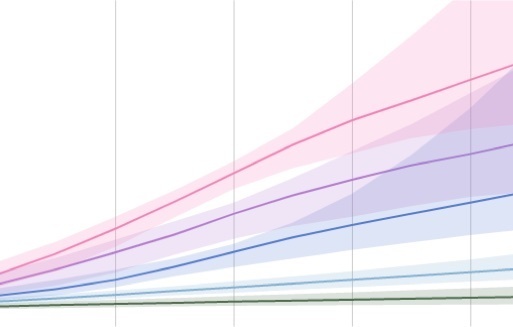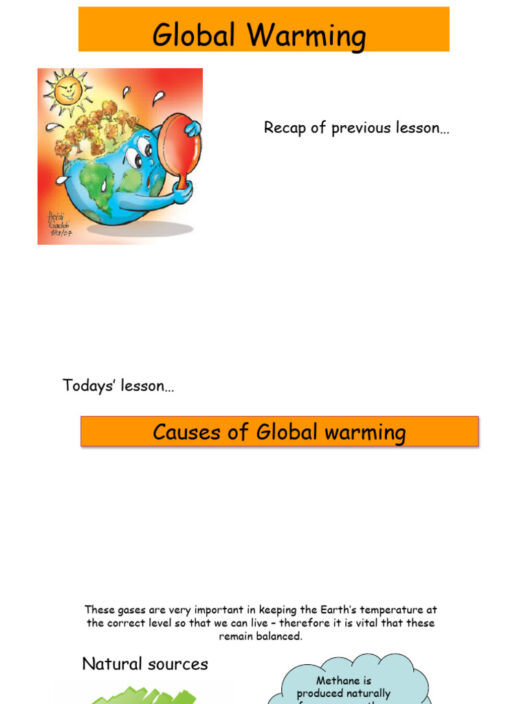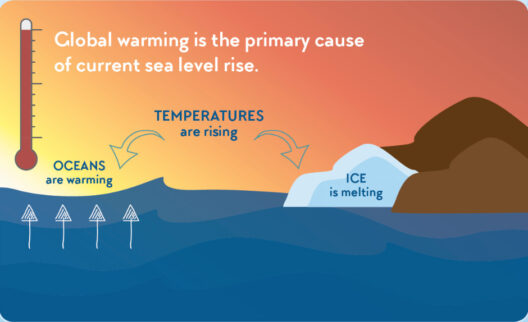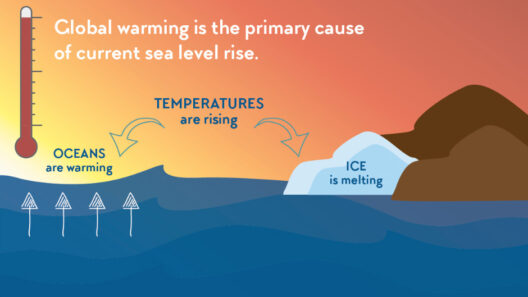With each crashing wave against the shore, there lies a silent whisper of change—a profound tale of rising tides and melting worlds. The question that looms over coastal cities and tranquil shores alike is as essential as the very air we breathe: Are sea levels really rising? The answer is a resounding yes, and understanding this phenomenon requires a multifaceted examination of various contributing factors that, when combined, create a somber picture of our planet’s future.
To fully grasp the implications of rising sea levels, it is imperative to delve into the science behind this trend. Sea level rise is not merely an environmental concern but a complex interplay of physics, geography, and climate science. The oceans, our planet’s expansive blue heart, are responding to escalating greenhouse gas emissions like a fevered patient battling an unrelenting illness. This article aims to unravel the intricacies of this crucial issue, shedding light on its consequences for humanity and the natural world.
Understanding the Mechanics of Sea Level Rise
At the crux of rising sea levels are two primary culprits: thermal expansion of seawater and the melting of glaciers and ice sheets. As the Earth’s average temperature climbs, the oceans absorb heat, causing water to expand. This phenomenon, known as thermal expansion, accounts for a notable portion of sea level rise. Imagine a balloon inflating as air is pumped in; the surface area expands, just as our oceans do with heat. The challenge lies not only in the incremental rise of water levels but also in the erratic behavior of this expansion, influenced by wind, currents, and temperatures.
The second major factor—melting ice—reveals a more alarming narrative. Glaciers and polar ice sheets, which have stood as protective barriers for millennia, are disintegrating at unprecedented rates. The Greenlands and Antarticas of our world are shedding their icy crowns, contributing a significant influx of water into the oceans. This is not merely an aesthetic loss; it is akin to observing a rich tapestry being unraveled thread by thread, leaving behind a stark and unembellished reality. The gravitational pull of these great ice masses has shifted, further exacerbating regional sea level variations, complicating projections and responses to this crisis.
The Stark Reality: Impacts and Implications
The implications of rising sea levels are myriad and profound. Coastal communities face an imminent threat, akin to a relentless tide eroding not just shorelines but livelihoods and homes. The World Bank projects that by 2050, tens of millions of people could be displaced due to increased flooding and erosion. Imagine a mass exodus, a migratory wave fueled not by choice but by necessity. This could lead to the displacement of entire populations, creating environmental refugees and straining resources in host regions. The repercussions extend beyond the immediate geography; they ripple through economies, ecosystems, and social fabrics, igniting potential conflicts over dwindling habitable land.
Moreover, the ecological consequences are equally dire. Saltwater intrusion into freshwater sources disrupts local biodiversity and agriculture, creating a delicate balance that, if disturbed, can lead to catastrophic collapses in both marine and terrestrial ecosystems. The intricate networks of life—a symphony of flora and fauna—are poised to face extinction in the face of rising salinity, habitat loss, and the strain of more frequent extreme weather events. The once-vibrant coral reefs, the oceans’ grand mosaics, are already under siege, suffering bleaching and degradation, which ultimately impacts countless species reliant on them for survival.
The Role of Policy and Action: Charting the Course Forward
Addressing the rising tide requires a concerted effort from the global community. Climate policies must evolve, integrating scientific insights into actionable frameworks. Mitigation strategies, such as reducing carbon emissions and promoting renewable energy, are essential components in the fight against climate change and the accompanying rise in sea levels. For coastal cities, investing in adaptive infrastructure is vital. Consider sea walls and storm surge barriers—these are the modern-day fortresses standing guard against the encroaching seas. Yet, the challenge is not merely one of construction; it requires foresight, collaboration, and unwavering commitment from governments and citizens alike.
Additionally, a paradigm shift in our relationship with the environment is necessary. Embracing sustainable practices, protecting natural buffers like mangroves and wetlands, could regenerate ecosystems that provide essential services—acting as natural barriers against flooding while sequestering carbon. Education and advocacy are critical in galvanizing public support, turning awareness into action. Every individual can contribute, whether by advocating for policy changes, supporting sustainable practices, or even contributing to local conservation efforts. The narrative of rising sea levels is not solely one of loss but can also be rewritten into one of resilience and hope.
In conclusion, the challenge posed by rising sea levels is a clarion call for humanity. It demands unfaltering attention and immediate action, not just for the present generation but for generations yet to come. By understanding the underlying science, recognizing the implications, and fostering collective action, we can hope to navigate these turbulent waters. The waves may rise, but it is our choices that will shape the shores of tomorrow.







